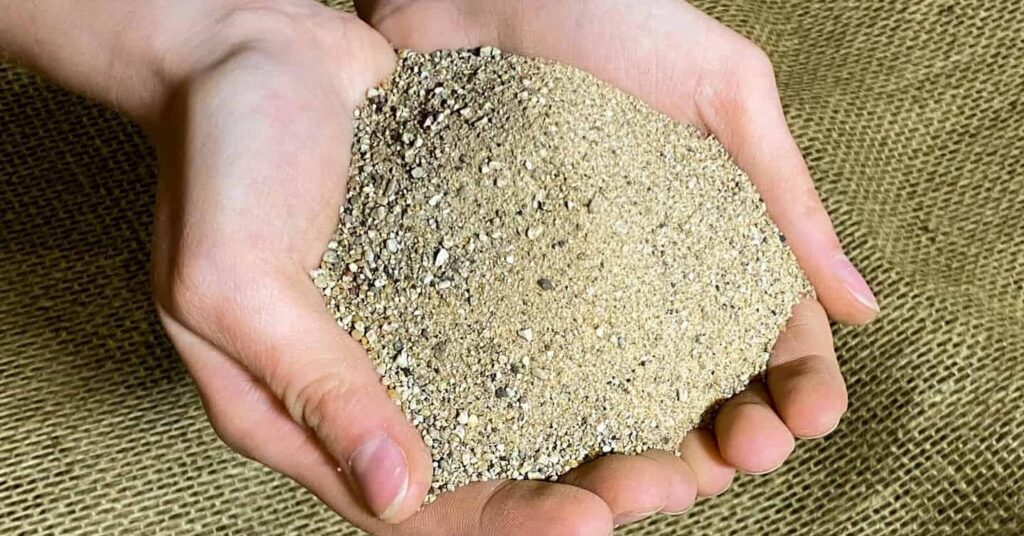Are you curious to know what is masonry sand? You have come to the right place as I am going to tell you everything about masonry sand in a very simple explanation. Without further discussion let’s begin to know what is masonry sand?
In the realm of construction and building materials, the term “masonry sand” holds significant importance as a fundamental component in various construction projects. From laying bricks to creating sturdy foundations, masonry sand plays a crucial role in the structural integrity and stability of buildings. In this blog post, we’ll uncover the definition, characteristics, and versatile applications of masonry sand in the construction industry.
What Is Masonry Sand?
Masonry sand, also known as brick sand or plaster sand, is a fine-grained aggregate material primarily composed of finely crushed and screened particles. It is specifically designed and processed to meet the rigorous standards required for construction purposes. Unlike other types of sand, such as beach or play sand, masonry sand undergoes meticulous grading to ensure uniformity and quality.
Composition And Characteristics:
The composition of masonry sand typically consists of fine particles derived from natural sources like quarries or riverbeds. Its grains are smaller than those of concrete sand but larger than those of silica sand, giving it a balanced texture that facilitates proper compaction and bonding when mixed with other construction materials.
Masonry sand is characterized by its granular consistency, free of debris, organic matter, and larger stones or particles. Its texture allows for excellent workability and cohesion, making it an ideal material for various masonry applications.
Versatile Applications In Construction:
- Bricklaying and Masonry Work: Masonry sand serves as a foundational material for laying bricks, blocks, and stone veneers. Its fine texture allows for precise and stable placement, aiding in the creation of strong and durable structures.
- Plastering and Stucco: The fine grains of masonry sand make it well-suited for blending with cement and lime to create plaster or stucco mixes. It provides a smooth and cohesive surface for interior and exterior finishing applications.
- Bedding Material: In landscaping and hardscaping projects, masonry sand acts as a reliable bedding material for setting pavers, flagstones, or concrete slabs. Its uniform texture ensures proper compaction and stability for the installed surface.
- Joint Filling: During construction, masonry sand is often utilized for filling joints between bricks or stones, providing stability and preventing moisture penetration.
Assemble more facts about different topics on Feedatlas.
Quality Assurance And Standards:
The production and distribution of masonry sand adhere to stringent quality control measures to ensure consistency in particle size, cleanliness, and absence of impurities. Regulations and standards set by construction authorities and industry organizations ensure that masonry sand meets the required specifications for different construction applications.
Conclusion:
Masonry sand stands as an indispensable building material in the construction industry, playing a vital role in creating structurally sound and aesthetically pleasing structures. Its uniform texture, workability, and compatibility with various construction materials make it a cornerstone in projects ranging from residential homes to commercial buildings. As a foundational element, masonry sand exemplifies the importance of quality aggregates in constructing durable and enduring structures that stand the test of time.
FAQ
What Is The Difference Between Masonry Sand And Regular Sand?
Mason Sand is a finer crushed sand with more uniform granules than concrete sand and has been screened and washed. It is the most versatile sand in terms of applications. Works well as a joint sand between pavers and other narrow joints.
What Is Another Name For Masonry Sand?
Masonry sand (also known as mortar or mason sand) has fine, uniformly sized grains, giving it a smooth feel and look. Its name originates from the fact that it is often used in masonry tasks. Nonetheless, masonry sand is tremendously versatile, and you can use it for a range of projects.
Can Masonry Sand Get Wet?
If it is a very sunny day, be sure to move the sand around or wet it often to keep the sand’s temperature cool for the chicken. *Wetting mason sand does not result in the sand hardening.
Is River Sand The Same As Masonry Sand?
River sand is very similar to mason sand and can be quite interchangeable with some of the other kinds of sand. The primary difference is that river sand is not quite as fine and may contain pebbles. It is often used in areas where horses may be kept.
I Have Covered All The Following Queries And Topics In The Above Article
What Is Masonry Sand
What Is Masonry Sand Used For
What Is The Ratio Of Sand And Masonry Cement Mix?
What Is The Cement Sand Ratio For Brick Masonry
What Is Masonry Sand Patio Level Sand?
What Is Better Patio Stone Roadbase Or Masonry Sand
What Is Masonry Medium Sand
What Is Masonry Sand Vs Sand
What Is Remuxing Mkv
What Is Remux 4k
Remux Vs Bluray
Is Remux Worth It
What Is Remux Quality
What Is Remux 1080p
Remux Obs
Remux Pronunciation
What Is Masonry Sand
What is the difference between mason sand and regular sand
